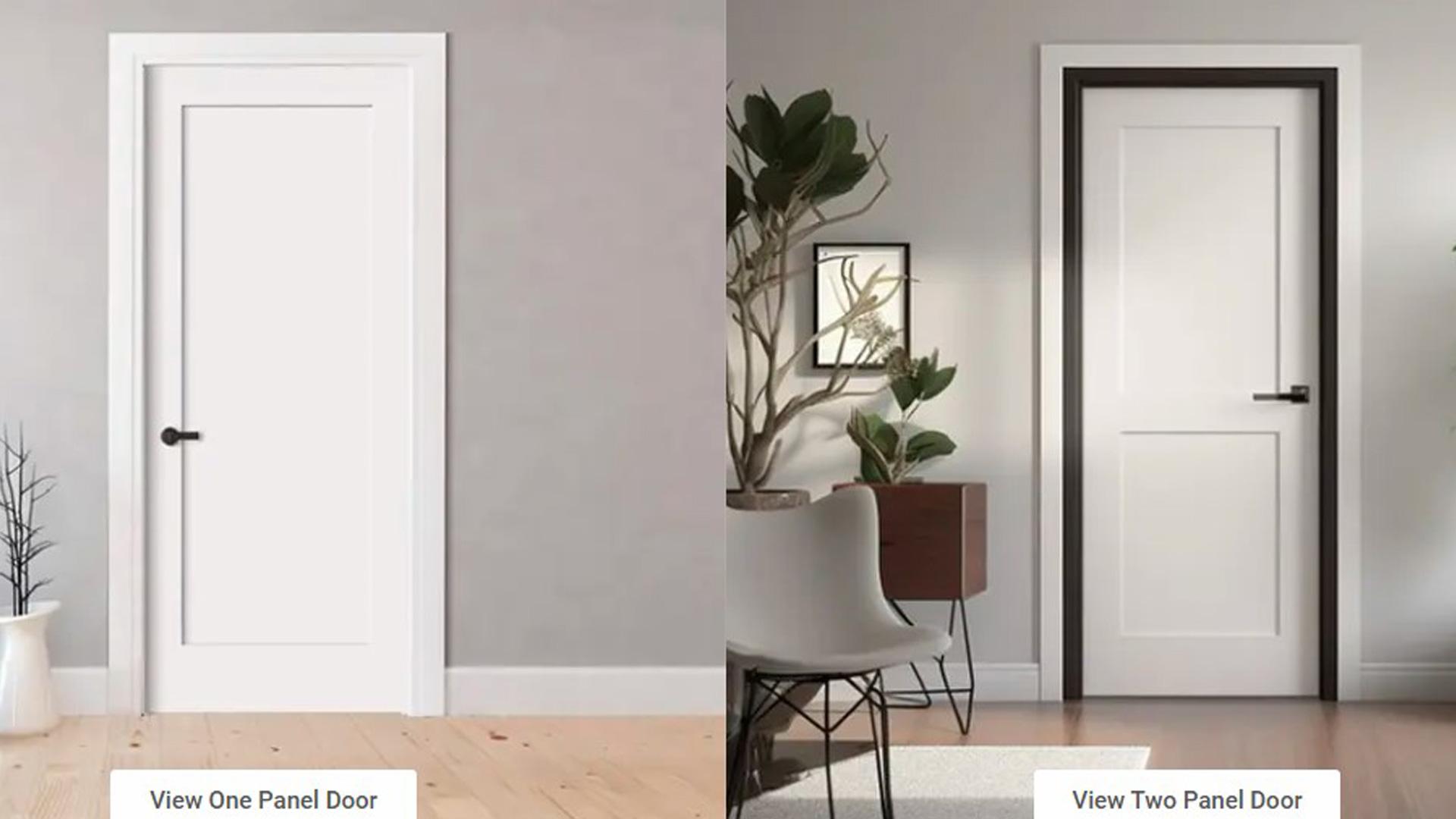The Complete Guide to 24 Prehung Interior Doors and Fire Rating Door Safety

When embarking on a home renovation or new construction project, selecting the right doors is a critical decision that impacts both aesthetics and safety. Two terms you will undoubtedly encounter are the 24 prehung interior door and the fire rating door. While one addresses the practical aspects of sizing and installation, the other is a non-negotiable component of building safety, particularly in areas like garages, utility rooms, and multi-family dwellings. Understanding the nuances of each—from the precise engineering of a prehung unit to the life-saving technology behind a fire-rated barrier—is essential for any homeowner, builder, or DIY enthusiast. This comprehensive guide will delve into everything you need to know to make an informed choice for your project.
Part 1: The Practical Choice - Understanding the 24 Prehung Interior Door
Let's start by breaking down what this term actually means.
-
24: This refers to the door's width. A 24-inch door is a common size, often used for bedrooms, bathrooms, and closets. It’s wide enough to comfortably move furniture through while being space-efficient. It's crucial to remember that the nominal size (24") refers to the door slab itself; the rough opening in your wall will need to be larger to accommodate the frame—typically 26 inches wide by 82.5 inches high for a standard 80-inch door.
-
Prehung: This is the key to a streamlined installation. A prehung door doesn't just come as a lone slab. It is a complete system, purchased as a single unit that includes:
-
The door slab itself.
-
The frame (or jamb), already assembled with top and side pieces.
-
Hinges that are mortised (recessed) into both the door and the frame, perfectly aligned.
-
The hinge-side casing (trim) is often attached.
-
A pre-cut hole for the door handle and latch assembly.
-
Why Choose a Prehung Door?
The primary advantage is ease and accuracy of installation. For a DIYer, hanging a door from scratch ("slab door") into an existing frame is a difficult task requiring precise chiseling for hinges and perfect alignment to avoid binding. A prehung door eliminates this guesswork. You simply place the entire unit into the rough opening, shim it to be level and plumb, and secure it to the framing. Then, you nail on the remaining trim. It’s a far more efficient process that guarantees a professional-looking result with a perfect fit and smooth operation.
Materials and Styles:
24 prehung interior doors are available in a vast array of materials and designs to match any home’s decor.
-
Materials: Solid core (filled with wood blocks or composite material) offer superior sound dampening, a heavier feel, and better durability. Hollow core doors are lighter and more affordable, making them a common choice for closets and low-traffic areas.
-
Styles: From classic six-panel designs to modern shaker styles with clean lines, and even flush doors for a minimalist look, the options are endless. You can also find prehung doors with glass inserts to allow light into spaces like home offices or dining rooms.
Part 2: The Guardian - Demystifying the Fire Rating Door
While a standard interior door provides privacy, a fire rating door is engineered to provide protection. Its purpose is to compartmentalize a fire, slowing its spread and giving occupants precious time to evacuate and emergency services time to respond.
What Does a Fire Rating Mean?
A fire door's rating (e.g., 20-minute, 45-minute, 60-minute, 90-minute) is determined by rigorous standardized tests. A 20-minute door, for instance, is tested to withstand fire exposure for a minimum of 20 minutes while maintaining its integrity. This rating indicates the duration the door assembly can be expected to perform its function during a fire. The most common ratings for residential use are 20-minute doors for interior applications like garage-to-house entry points and 60/90-minute doors for commercial or multi-family building exits.
Key Components of a Fire Rated Door Assembly:
It's vital to understand that the rating applies to the entire assembly, not just the door slab. This includes:
-
The Certified Door Slab: Constructed with non-combustible cores, often of mineral wool, vermiculite, or other fire-resistive materials. They are significantly heavier than standard doors.
-
The Certified Frame: Must be made of substantial material, like 1.75-inch thick wood or steel.
-
Intumescent Seals: This is the magic ingredient. These seals are installed in the door edge or the frame. When exposed to intense heat, they expand dramatically (often to several times their original size), sealing the gap between the door and the frame. This seals off the oxygen that fuels a fire and blocks toxic smoke, which is the leading cause of fire-related fatalities.
-
Approved Hardware: All components, including hinges, latches, and closers, must be rated to withstand high heat. Hinges must be steel ball-bearing types, and a self-closing device is almost always a mandatory part of the code requirement.
Where Are They Required?
Building codes strictly mandate the use of fire-rated doors. Common residential locations include:
-
The door between an attached garage and the living space.
-
Doors leading to utility rooms (furnace/water heater).
-
Doors in multi-unit dwellings (apartments, condos) leading to common areas or exit stairwells.
The Intersection: When Your 24 Prehung Interior Door Needs to be Fire-Rated
This is where our two topics converge. You may have a specific opening in your home—like a doorway from your kitchen into the attached garage—that is 24 inches wide. In this case, you cannot simply install a standard 24 prehung interior door. Code will require that you install a 24 prehung interior door that is also a fire rating door.
Fortunately, manufacturers produce prehung units that meet both needs. You can purchase a 24 prehung interior door assembly that is pre-engineered with a fire-rated slab, a certified frame, and the necessary intumescent seals already installed. This combines the installation benefits of a prehung unit with the critical safety features of a fire barrier.
Installation and Compliance: A Critical Note
Installing a fire-rated door is not a suggestion; it's a code requirement for safety. If you are replacing a door in a location that requires a fire rating, you must replace it with a properly rated assembly. Furthermore, for the door to perform as intended in a fire, it must be installed exactly according to the manufacturer's instructions and local building codes. This often involves using specific fasteners and ensuring gaps are precisely within tolerance. While a competent DIYer can install a prehung fire door, many municipalities require the installation to be permitted and inspected by a certified professional to ensure compliance. Always check with your local building authority before beginning such a project.
Conclusion: Making an Informed Decision for Safety and Style
Choosing between a standard door and a fire-rated door isn't about preference; it's about application and code. A beautiful 24 prehung interior door is the perfect solution for refreshing the look of your bedroom or bathroom, offering a hassle-free upgrade that enhances your home's style and function. However, in locations where safety is paramount, specifying a fire rating door is an indispensable investment in protecting your most valuable assets—your home and your family.
By understanding the purpose and specifications of both, you can ensure your next project is not only beautiful but also built to the highest standards of safety and durability. Always measure carefully, choose the right product for the right location, and never compromise on the critical protection a fire-rated door provides.







